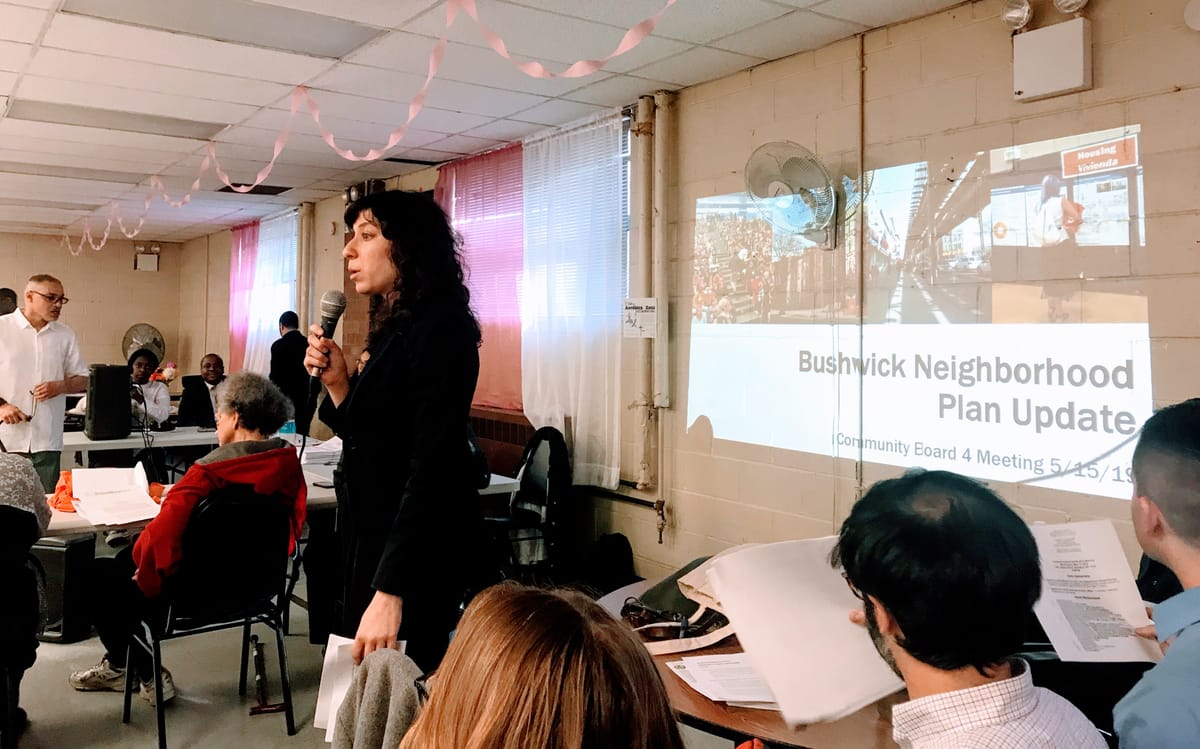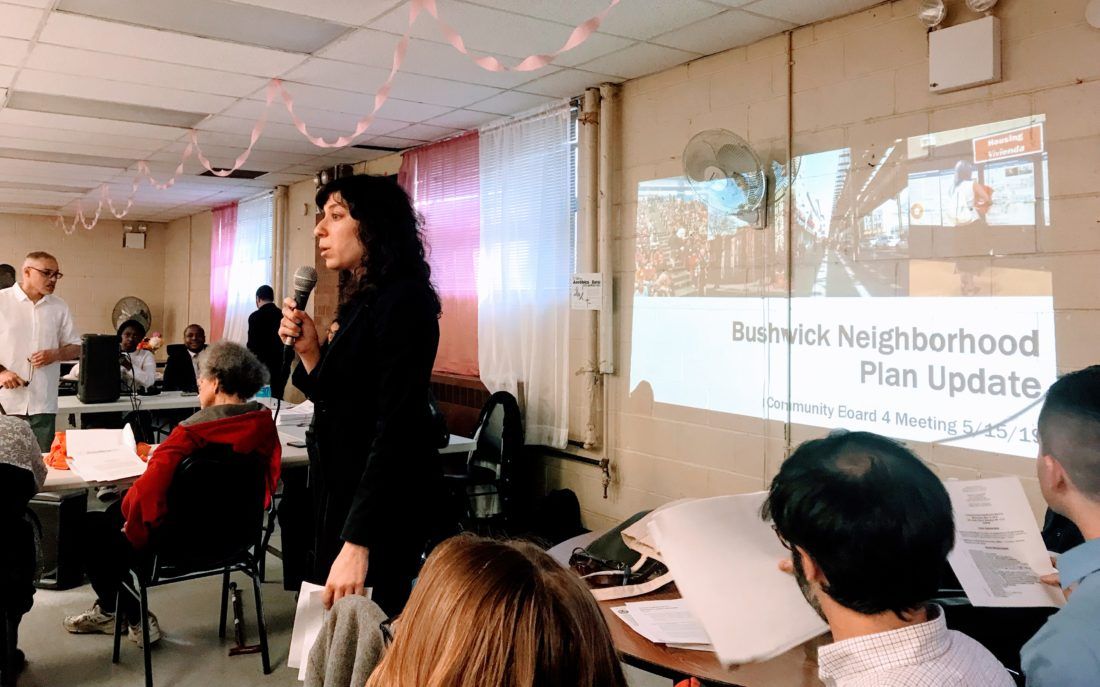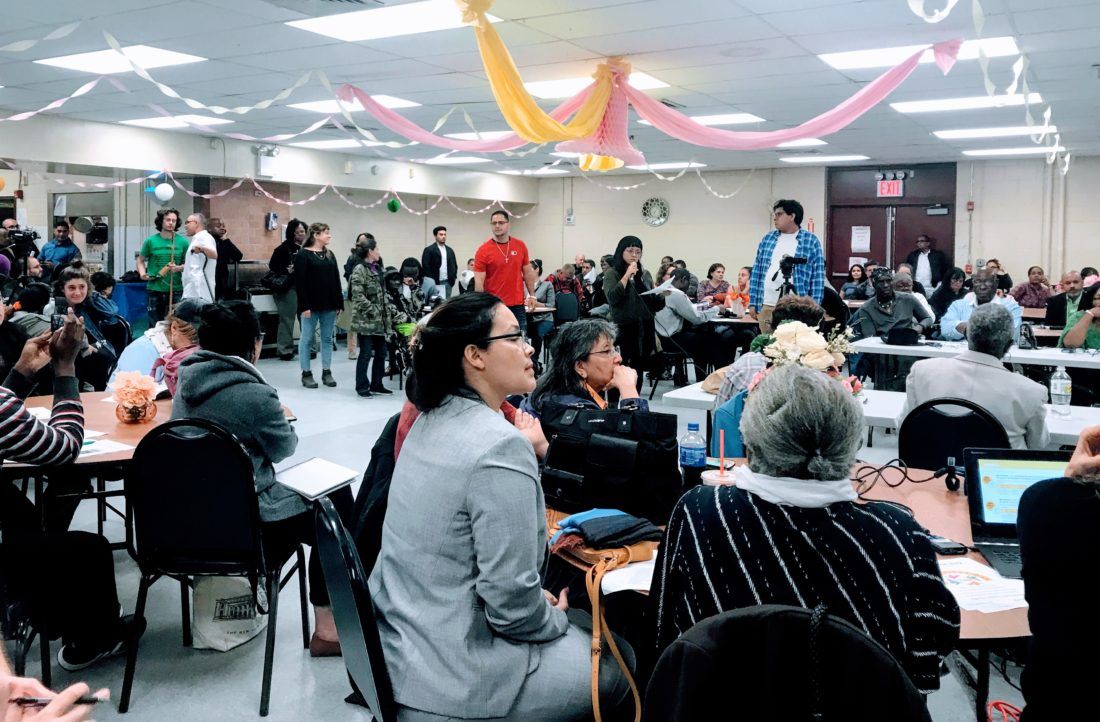Time To Start Packing? Bushwick Rezoning Not Aggressive Enough To Help Residents Remain In Neighborhood


BUSHWICK – Wednesday night, the Department of City Planning presented an update to the Bushwick rezoning plan, only to be confronted with questions about affordable housing and general frustrations about how this plan would most likely displace longtime residents.
The city’s plan was supposed to somewhat mirror the work of the Bushwick Community Plan, a strategy created by residents, nonprofits and local politicians who were upset by the gentrification. The BCP, which was submitted in September, calls for down-zoning housing, declaring some areas – historic districts, and investing in open space and health resources.
Sarit Platkin of the DCP presented updates to the plan and teased out some specifics that were later questioned by the community. “We’re aiming to respond to the plan wholistically,” she said.
Regarding housing, Platkin says, Bushwick has seen a 60% increase in rent since 2000 and only 25% of housing is rent-stabilized. The update she proceeded to present had mostly the same information from the previous meeting, including the creation of affordable housing on Stockholm Street, Old Stanley and at 1531 Broadway.
The City also proposed two MIH options to choose from – 25% of housing to be set aside for families making $56,000 per household or 20% of housing be set aside for families making $38,000 per household. She added that any projects financed by the Department of Housing Preservation and Development would be required to making 15 percent of their housing affordable. Platkin said 40% of Bushwick households would be eligible for these plans, but one-third of Bushwick residents make below this amount, and therefore would not be served.
Regarding land use, once again, the DCP presented many of the same initiatives it did three weeks ago.
- All mid-block buildings will be zoned R5b and R6b which would allow them to be three to five stories tall.
- Neighborhood corridors (Knickerbocker, Central and Wilson) will be zoned R6a or R7a, or the “minimum zoning that would trigger mandatory inclusionary housing.”
- In manufacturing districts, the city wants to zone two-thirds of buildings for industrial and job uses and one-third to be new residential that is “very focused on permanently affordable housing.”
Unlike during last month’s meeting, Platkin was not regularly interrupted by anti-gentrification protesters, but the questions that followed the presentation, both from the board and the community, were painted with frustration and disappointment.

Community board member Martha Brown asked why they were rezoning some buildings from being R3 and R4 to R6, as she believes that gives developers even more motivation to push people out and build more units. “We don’t want our neighborhood to look like Williamsburg,” she says.
Community board member Julie Dent asked why certain programs—such as the Neighborhood Pillars Program (launched in December 2018), the Certification of No Harassment Pilot Program (launched in September 2018), and the Shop Healthy Program (launched in 2012)—were included in the city’s plan, when they have already been underway. The resident also expressed that the inclusion of these plans gives the impression that the city is doing much more than it actually is.
Senior advisor at the Mayor’s Office of Intergovernmental Affairs Ahmed Tigani told Dent that they understand that these initiatives have already started, but it’s still important to include them. “If we acknowledge that there’s work being done and there are people who are trying to invest and grow the neighborhood, it helps us in our analysis across the board.”
Chairperson Robert Camacho added that 95 percent of what the city presented has already been done by the community and that he wants to makes sure people who have lived in Bushwick for years can continue to do so.
Questions from the community didn’t go any better.
One resident stood up and said what the city is touting as affordable housing won’t be affordable enough. “I had a single mom with two kids living off of $15,000,” she said. “$30,000 is not affordable to a lot of families.”
Another community member said that even if there is affordable housing, many of the businesses coming in don’t serve those with lower income. And, businesses that have been in Bushwick for years are being pushed out as gentrifiers don’t patronize them. “People don’t bring their business to black and brown business,” she said.
Andrea Biro has lived in Bushwick since the early 1990s, and is against rezoning altogether. She says that the community should just protest project by project, as they did with 1601 Dekalb. “Back then, if you were in the neighborhood as a white person, the cops would stop and ask if you were lost,” she says. But today, this isn’t the case.
Ioan Sita owns properties in Bushwick and says that the rezoning doesn’t bother him. “Just like I came from another country here, people can go another place,” he said of the potential displacement of residents.
He adds that when he had two affordable housing units in one of his buildings, it took the city two years to assign him a tenant. “For two years I had to leave it vacant,” he said. “It’s a difficult process for the tenants and for the landlords.
Overall community members don’t seem to believe that the city’s work reflects the four years of work that went into the original Bushwick Community Plan put forward by the neighborhood. Brown ended the meeting by saying “developers are taking over the neighborhood as we speak.”




